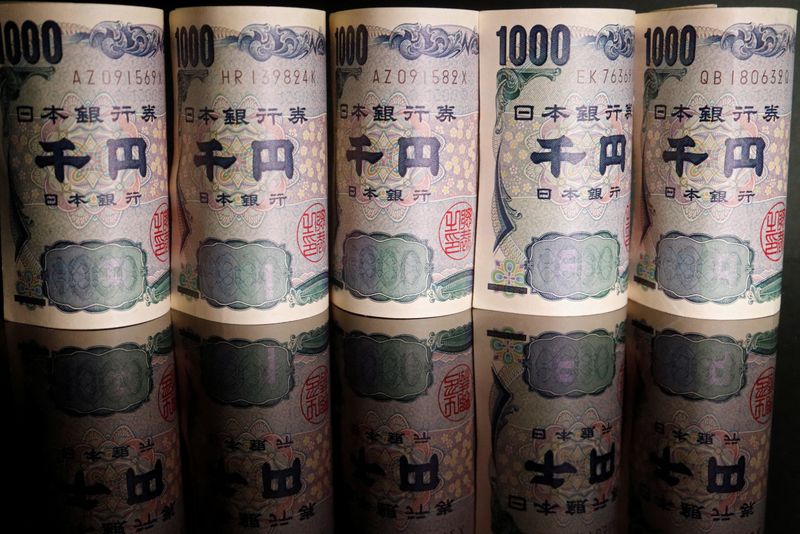By Chuck Mikolajczak
NEW YORK (Reuters) – The yen rose sharply on Wednesday in a move that sparked speculation as a result of a new intervention by Japanese officials to prop up the long-battered currency from a multi-decade low.
The yen has made some outsized moves in recent days, rising sharply from a 38-year low of 161.96 per dollar on Thursday and Friday, sudden rallies that market participants said showed signs of currency intervention.
Bank of Japan data released on Tuesday showed Tokyo may have spent 2.14 trillion yen ($13.5 billion) on interventions on Friday. Combined with the estimated amount spent on Thursday, Japan is believed to have bought almost 6 trillion yen through intervention last week.
“The fact that the movement is bigger than elsewhere seems to point to some sort of intervention, but the timing isn’t really right; it seems to come out of the blue and not be caused by a move in volatility. or a move in cash rates,” said Karl Schamotta, chief market strategist at Corpay in Toronto.
“We may be in a situation where traders are trigger happy, given that the Bank of Japan is looming in the background, exacerbating underlying moves. But as things stand now, it is difficult to say whether any intervention is actually taking place. what’s going on here; We are not seeing any flow data at this time that would indicate this is an intervention.”
Market participants also cited comments from Republican presidential candidate Donald Trump about the dollar’s recent strength as a possible cause for the greenback’s weakness in a Bloomberg interview published Tuesday.
Against the Japanese yen, the dollar weakened 0.32% to 156.25 after falling to a low of 156.09, a level not seen since June 12.
Japan’s finance ministry did not respond to requests for comment. Japan’s top currency diplomat Masato Kanda said he would have to respond if speculators caused excessive moves and that there was no limit to how often authorities could intervene, Kyodo News reported.
The , which measures the dollar against a basket of currencies, was also weaker on the day, falling 0.43% to 103.76 after hitting a four-month low of 103.64 after comments from several US officials the Federal Reserve indicated that the central bank was moving closer to a cut. interest rates.
The Fed’s Beige Book on economic activity showed a slight to modest pace of expansion from late May to early July, with companies reporting some signs of continued weakness in the labor market.
While markets see only a slim chance of a rate cut of at least 25 basis points (bps) at the Fed’s July meeting, they are fully pricing in a cut in September, CME’s FedWatch Tool shows.
The euro rose 0.37% to $1.0937 ahead of a European Central Bank (ECB) policy meeting on Thursday, which is widely expected to keep interest rates steady, highlighting comments from President Christine Lagarde for clues about the timing of the interest rate cut. the next rate cut after a 25 basis point cut in June.
Sterling strengthened 0.32% at $1.3006, hitting a one-year high against the dollar of $1.3044, on data showing British inflation rose slightly more than expected, boosting chances on a Bank of England interest rate cut at the upcoming meeting were tempered.

Headline inflation remained at 2% year-on-year in June, against expectations of a 1.9% increase, while closely watched services inflation stood at 5.7%.
In cryptocurrencies, Bitcoin fell 0.21% to $64,556.03. fell 0.56% to $3420.38.


